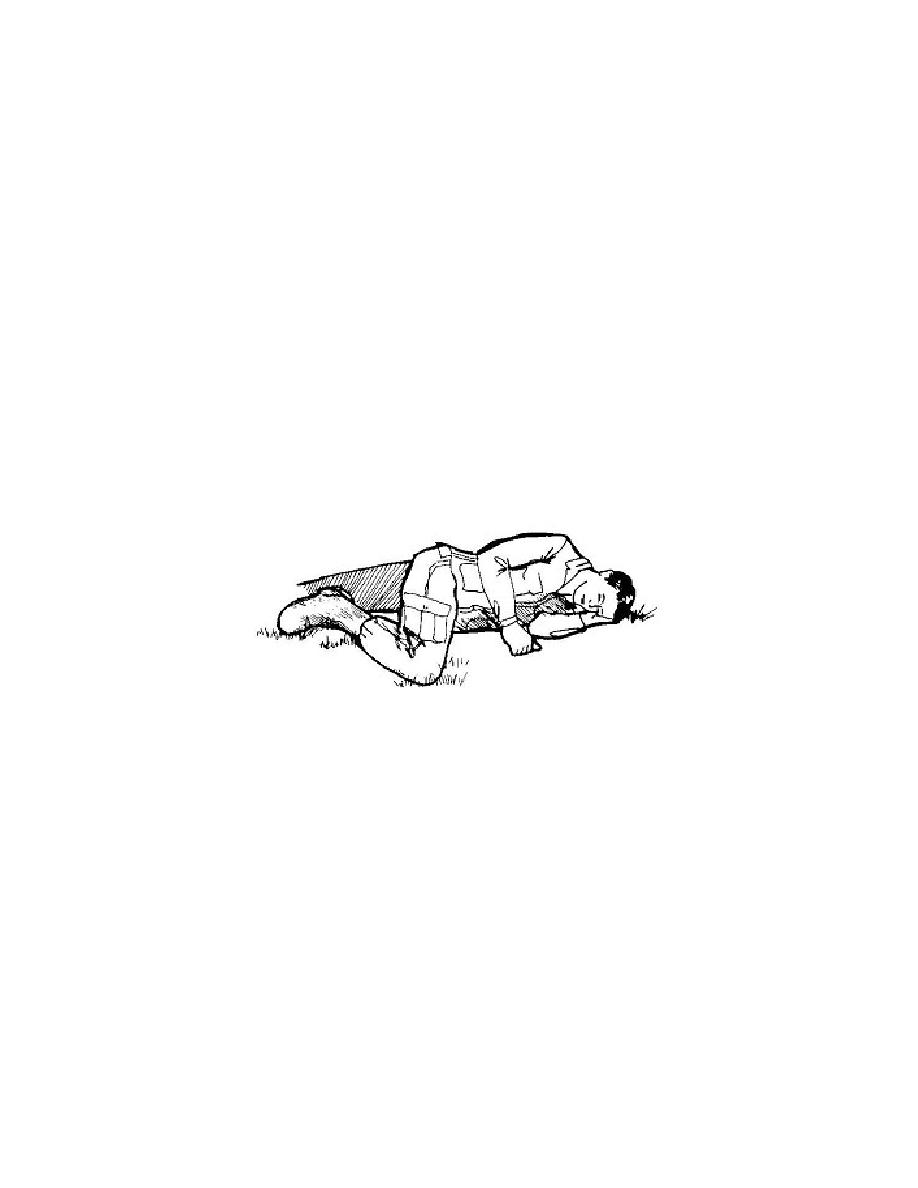
CAUTION:
Never force the airway into the casualty's nostril. If resistance is met,
pull the tube out and attempt to insert it in the other nostril. If neither
nostril will accommodate the airway, go to step d.
d. Place the casualty in the recovery position (paragraph 3-8).
e. Send a soldier to seek medical aid or seek medical aid for the casualty
yourself.
3-8.
PLACING THE CASUALTY IN A RECOVERY POSITION
The recovery position (figure 3-11) allows blood and mucus to drain out of the
casualty's nose and mouth and not to drain back into the airway. To place a casualty in
the recovery position:
a. Roll the casualty as a single unit onto his side.
b. Place the hand of the casualty's lower arm under his chin.
c. Flex the casualty's upper leg.
Figure 3-11. Casualty in the recovery position.
3-9.
MONITORING THE CASUALTY'S BREATHING
Continue to monitor the casualty's breathing.
a. If the casualty does not have a nasopharyngeal airway inserted and his
breathing rate falls below two breaths every 15 seconds, insert a nasopharyngeal
airway.
b. If tension pneumothorax develops, perform a needle chest decompression
(Lesson 4).
c. If needed, prepare the casualty for evacuation (Lesson 7).
MD0877
3-12



 Previous Page
Previous Page
